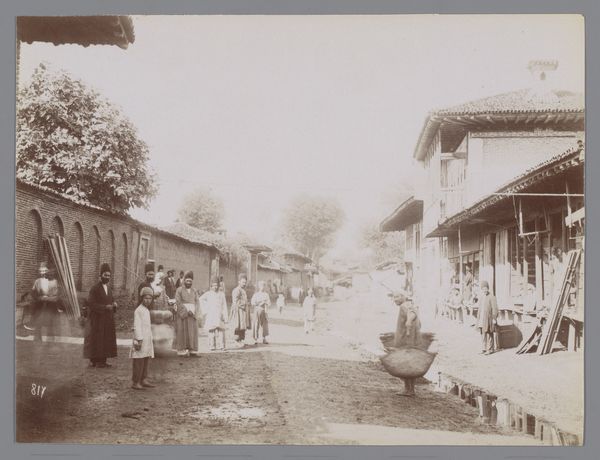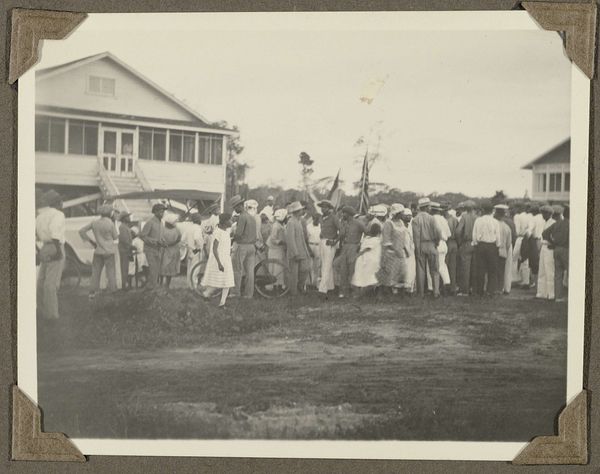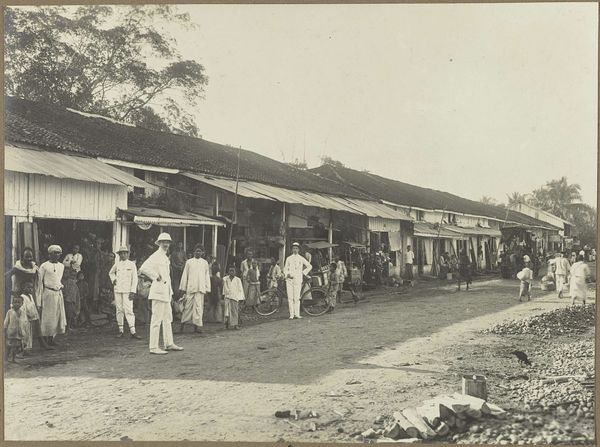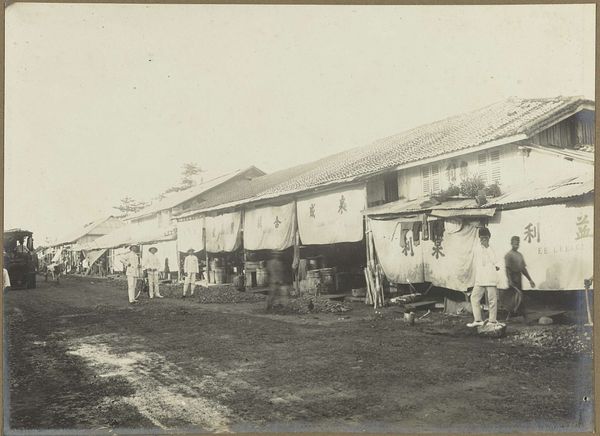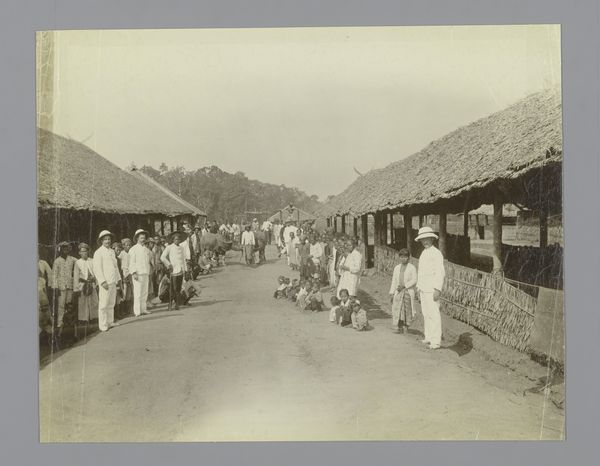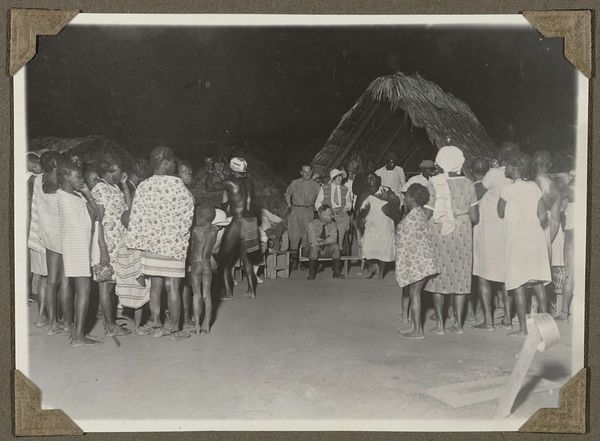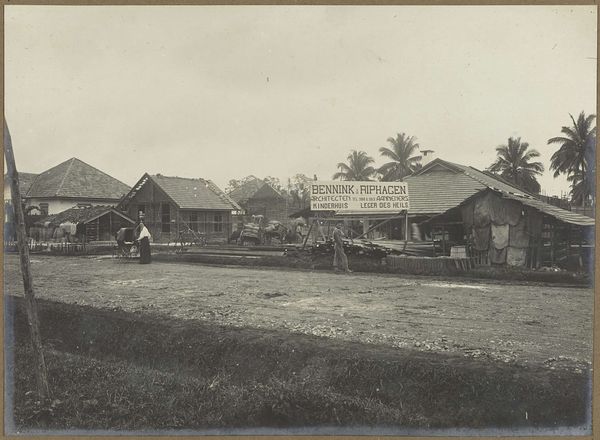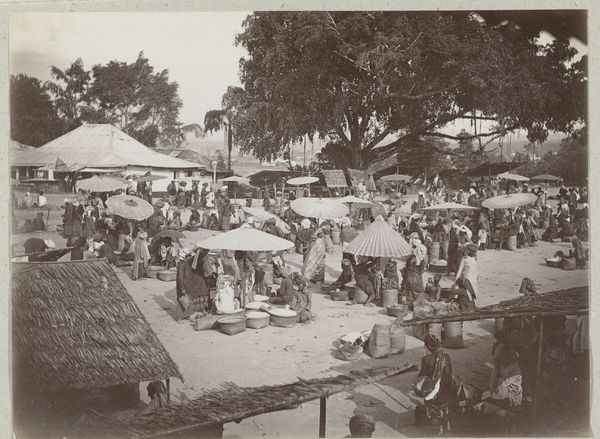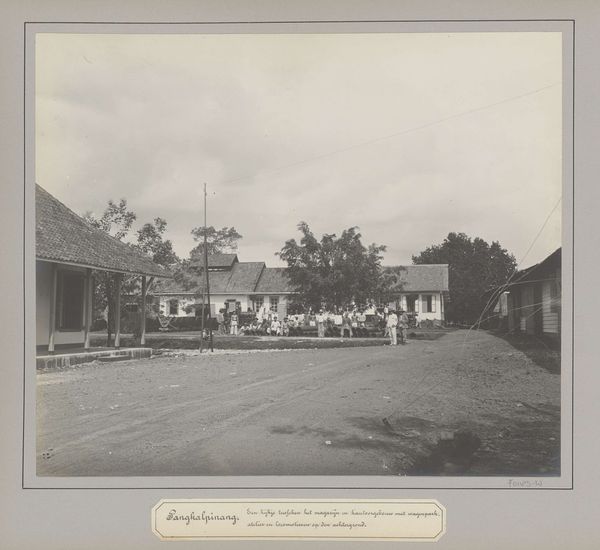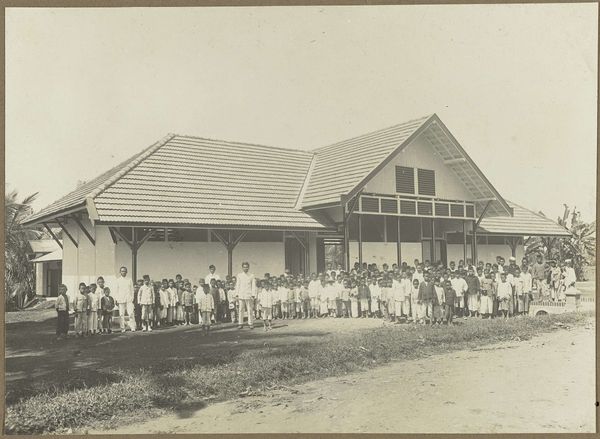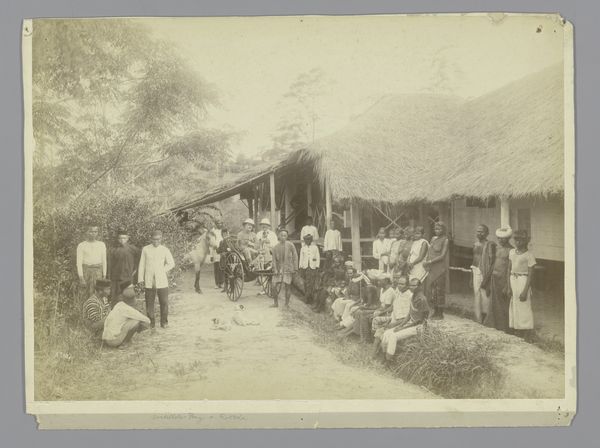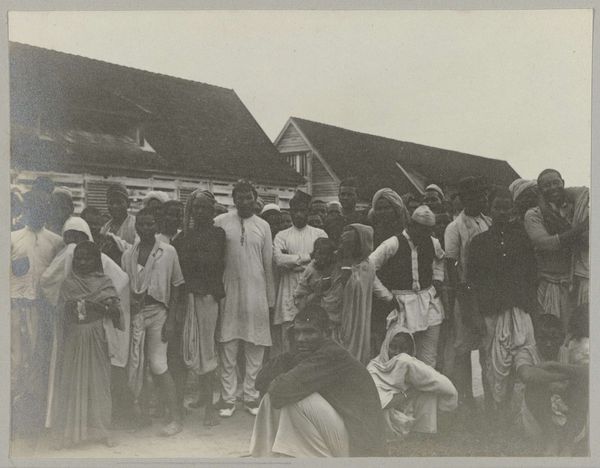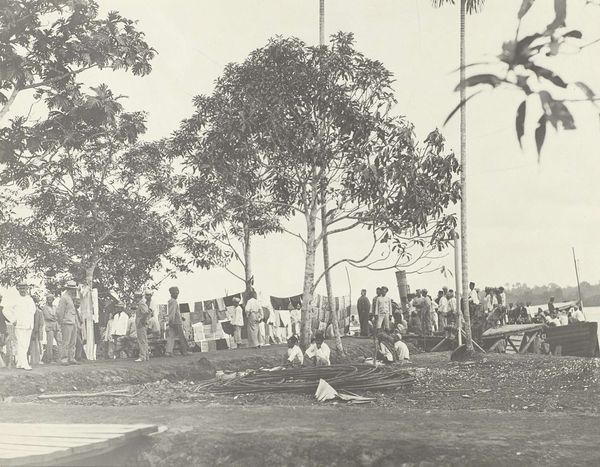
photography, gelatin-silver-print
#
portrait
#
african-art
#
landscape
#
photography
#
orientalism
#
gelatin-silver-print
#
realism
Dimensions: height 81 mm, width 112 mm
Copyright: Rijks Museum: Open Domain
Curator: Hendrik Doijer's gelatin silver print, "Hindostaanse contractarbeiders in het immigrantendepot," dating from around 1903 to 1910, offers a stark depiction. It’s filled with a stillness that feels heavier than the scene perhaps should. Editor: The stillness hits me too. A sort of forced patience etched onto their faces in grayscale. Are these people waiting, resigned, or something else entirely? I see the tropical landscape pressing down, with those wooden barrack buildings, almost a metaphor for containment. Curator: They were indeed waiting, though 'containment' is a loaded term. Doijer’s image is interesting because it functions both as documentation of a labor system and a form of what we would now call social realism, showcasing the indentured laborers in a precise time and place. We can discuss agency in the framing. The people here are standing still, like they are the objects to scrutinize. But in many ways, that gaze, whether complicit or unwitting, gives the spectator a role. Editor: Complicit indeed. Thinking about those barrack buildings and that gray, overcast sky… it smacks of forced relocation. The scale, in terms of composition, feels quite deliberately impersonal, like rows and rows. Is this sort of staging somehow meant to disempower or normalize, perhaps, something insidious about labor exploitation in colonized regions? Curator: Exactly. Images like these did circulate, as documentation of colonial ventures but also, you're right, to reinforce certain perceptions about the availability of labor. Think of the history: Indian workers transported to Suriname after the abolition of slavery. This is part of the colonial enterprise; control manifested visually. And, while Doijer perhaps believed in objective record, every image comes charged with social intention, unconscious or not. Editor: It also brings up a peculiar dynamic with landscape art, which, generally, we feel as light, movement, change; where in fact, Doijer's realism of the land turns out to represent a state of suspension or arrest. And those subtle reflections of them on the water puddles! There’s something poetic about a mirror effect in depicting this scene that captures labor's dehumanization. Curator: A fitting observation, as well. What remains is an open wound for both the lands that exported the contract laborers and the ones that imported them. The black and white holds our eyes close to a specific narrative and away from a more complete reading, I'd add. Editor: Absolutely, seeing this has pulled some dark threads. I might explore the artist’s intention here; it demands it of us.
Comments
No comments
Be the first to comment and join the conversation on the ultimate creative platform.
